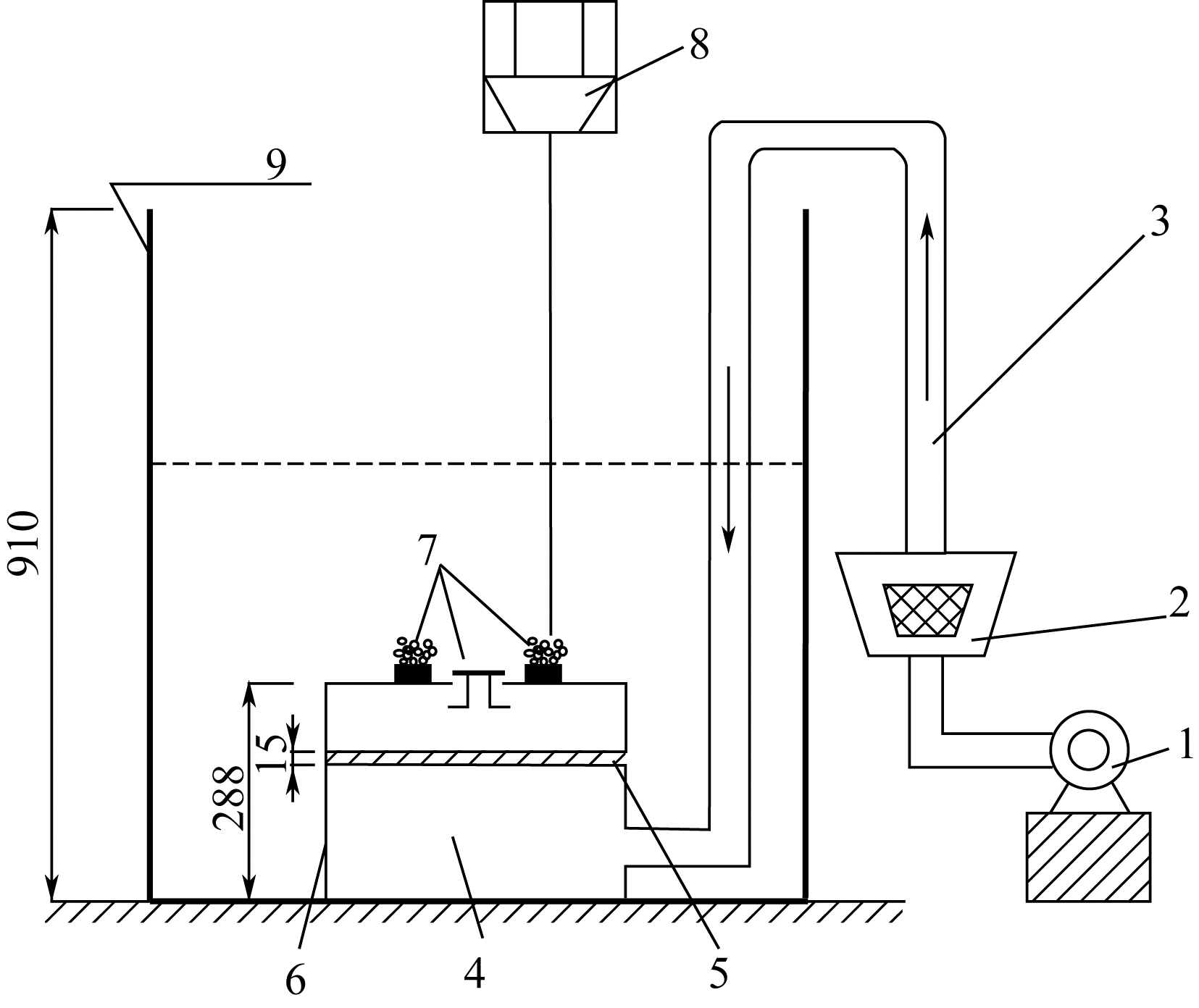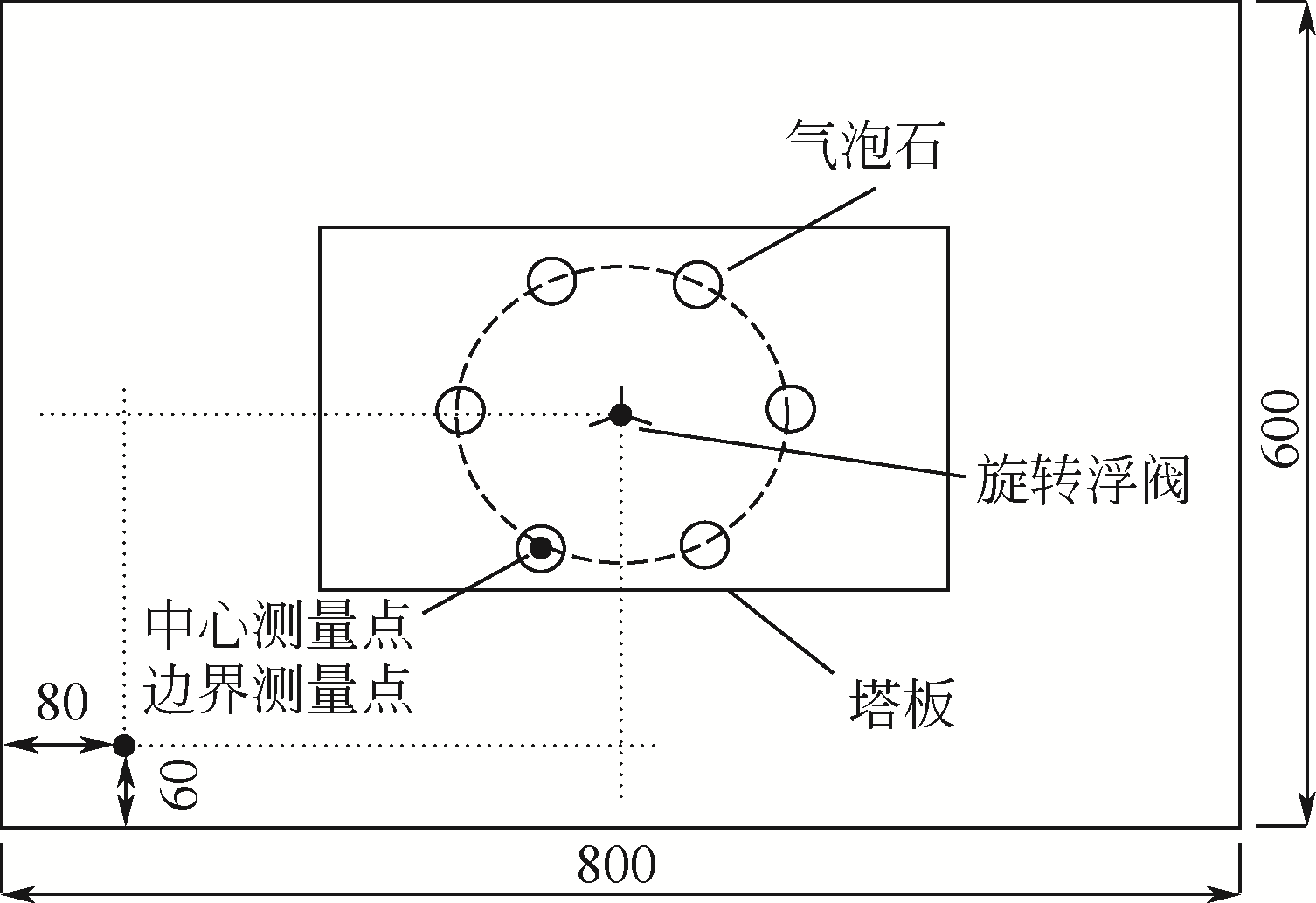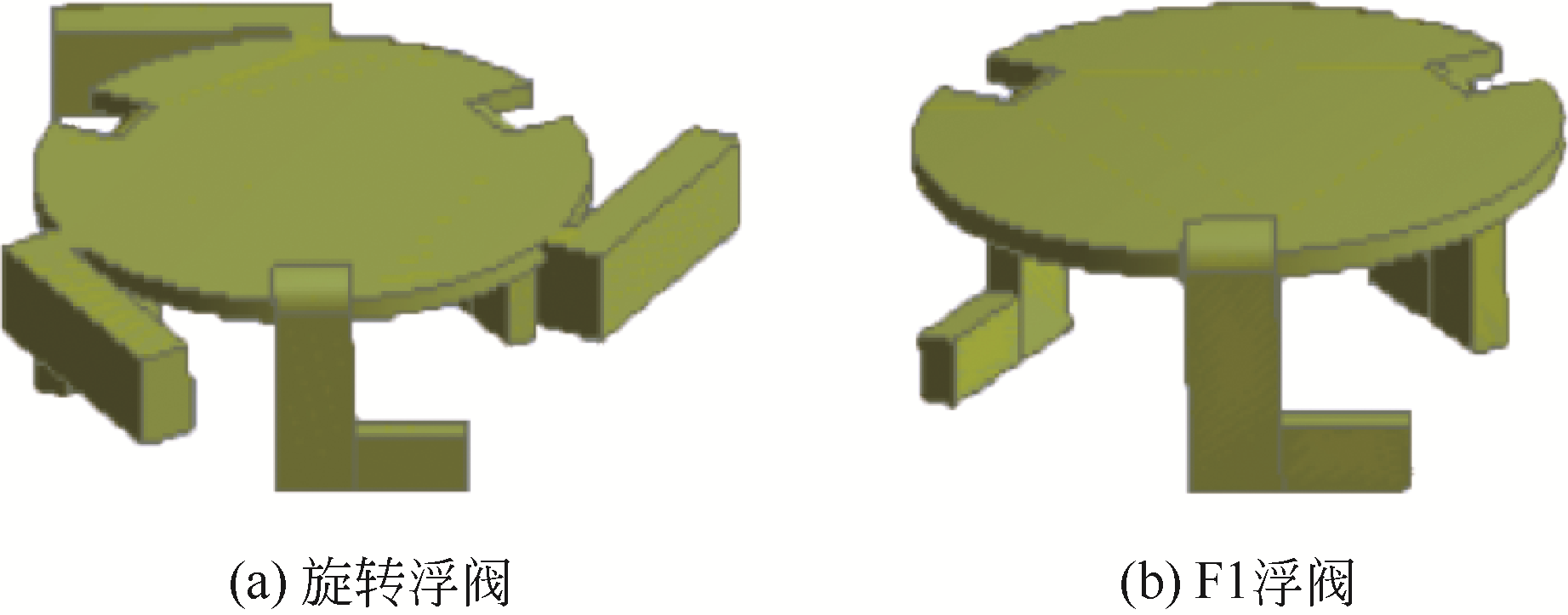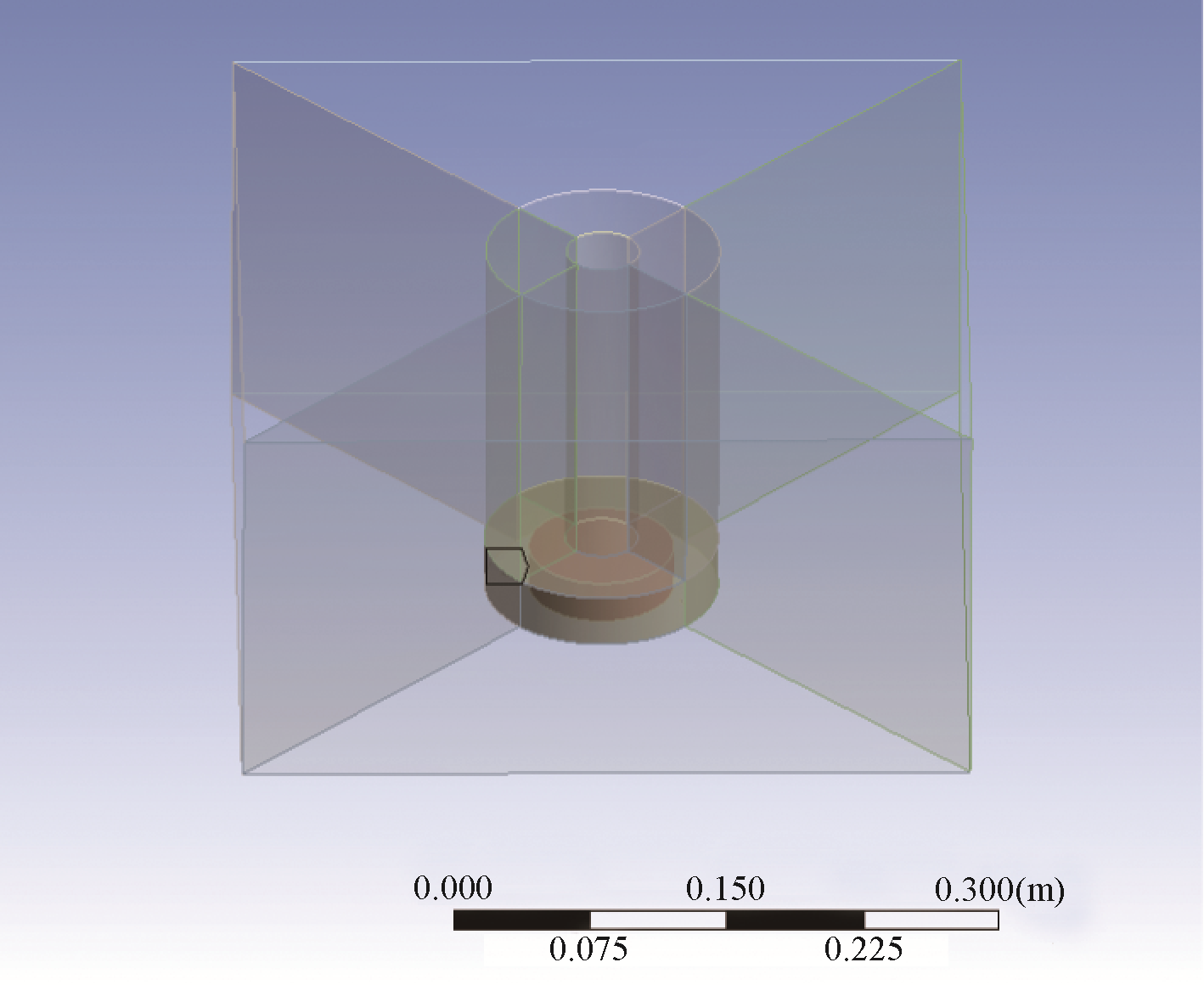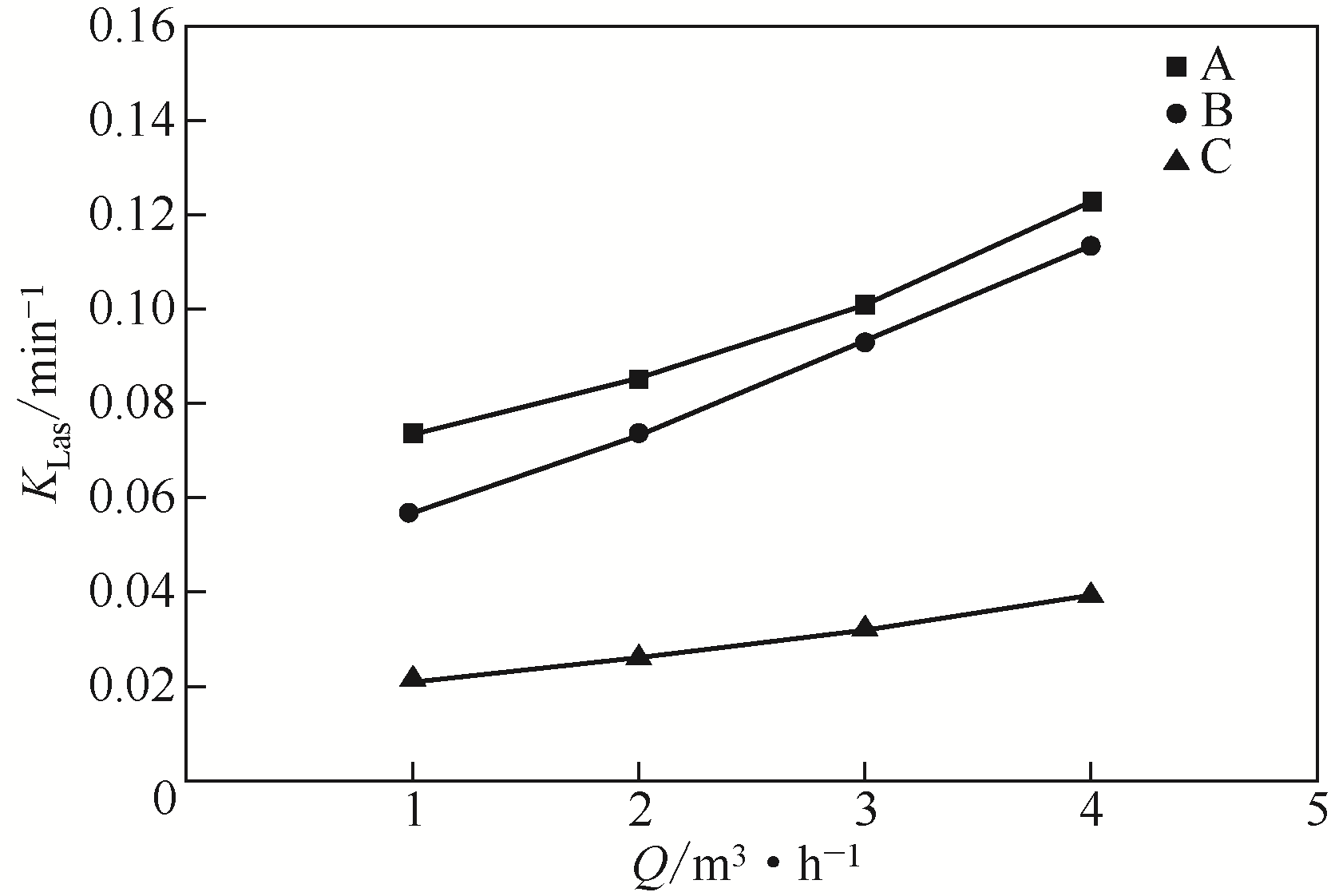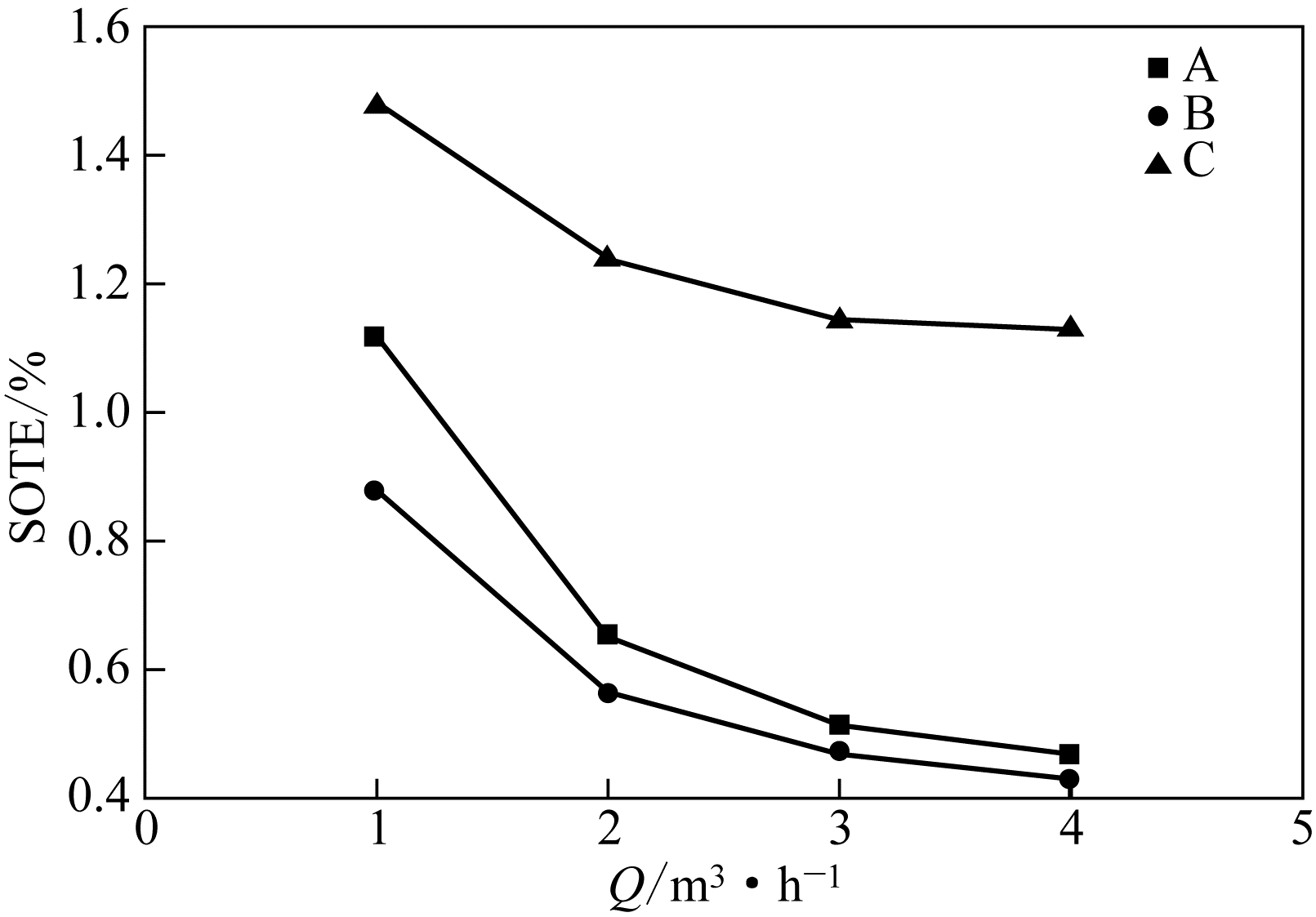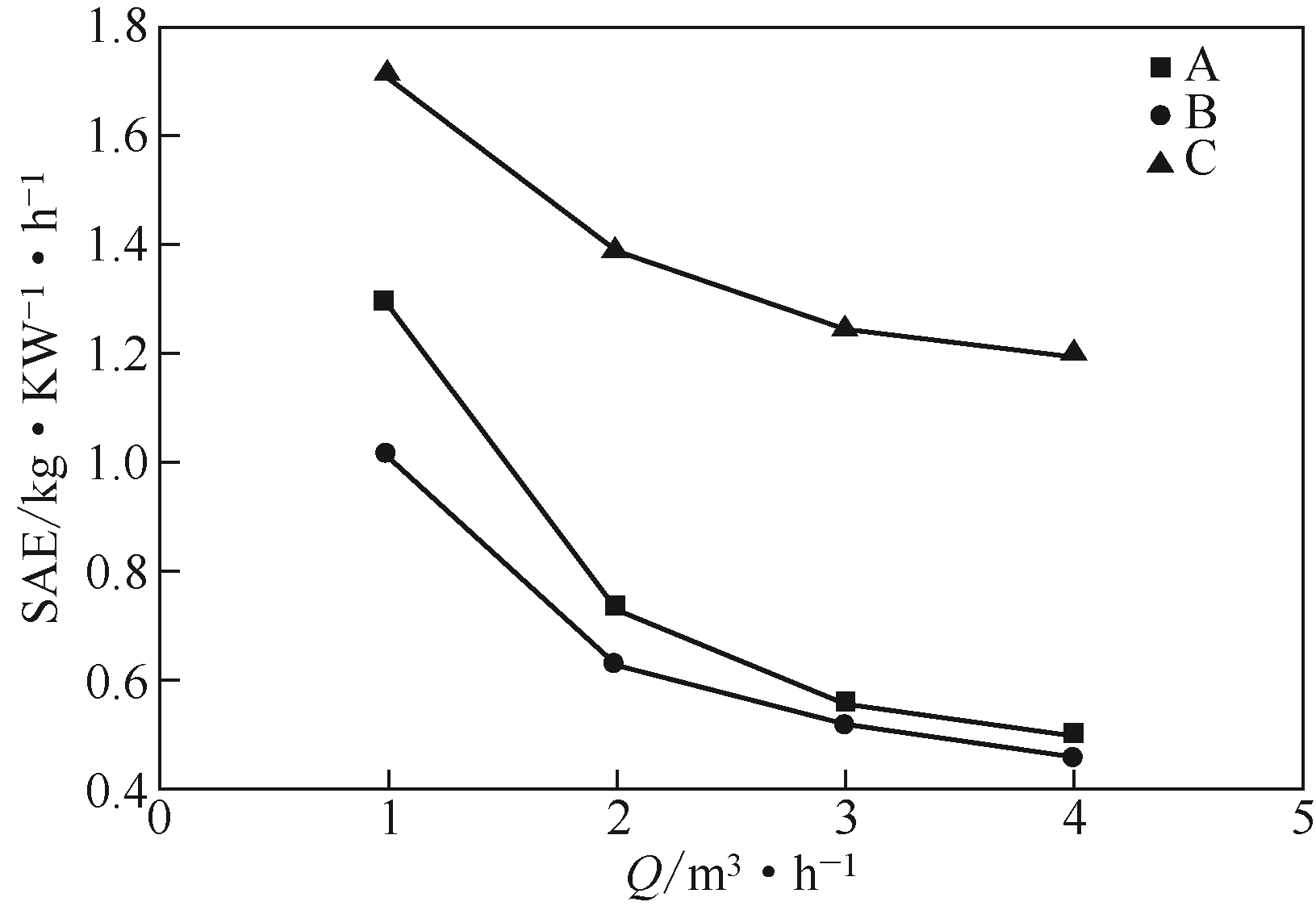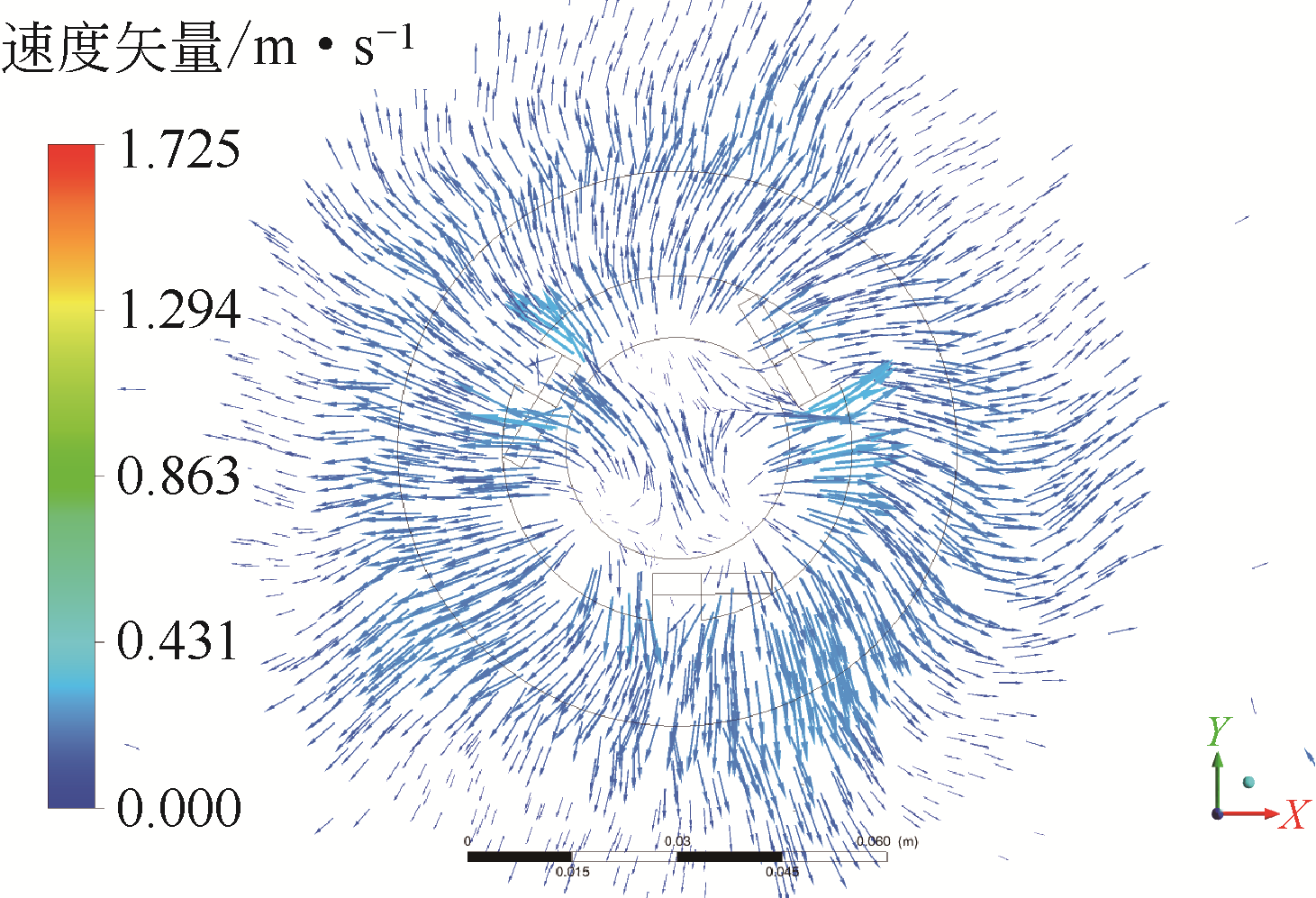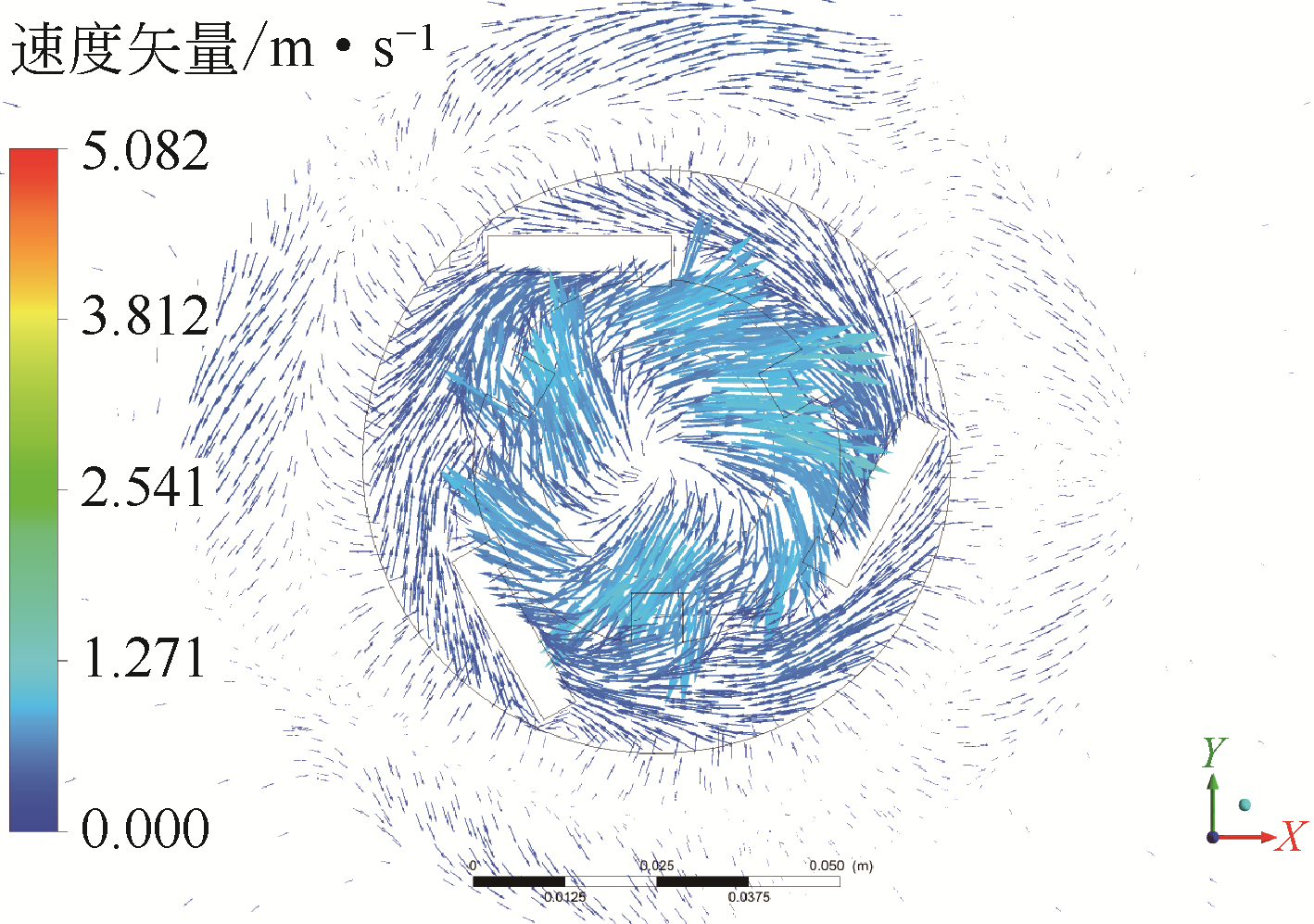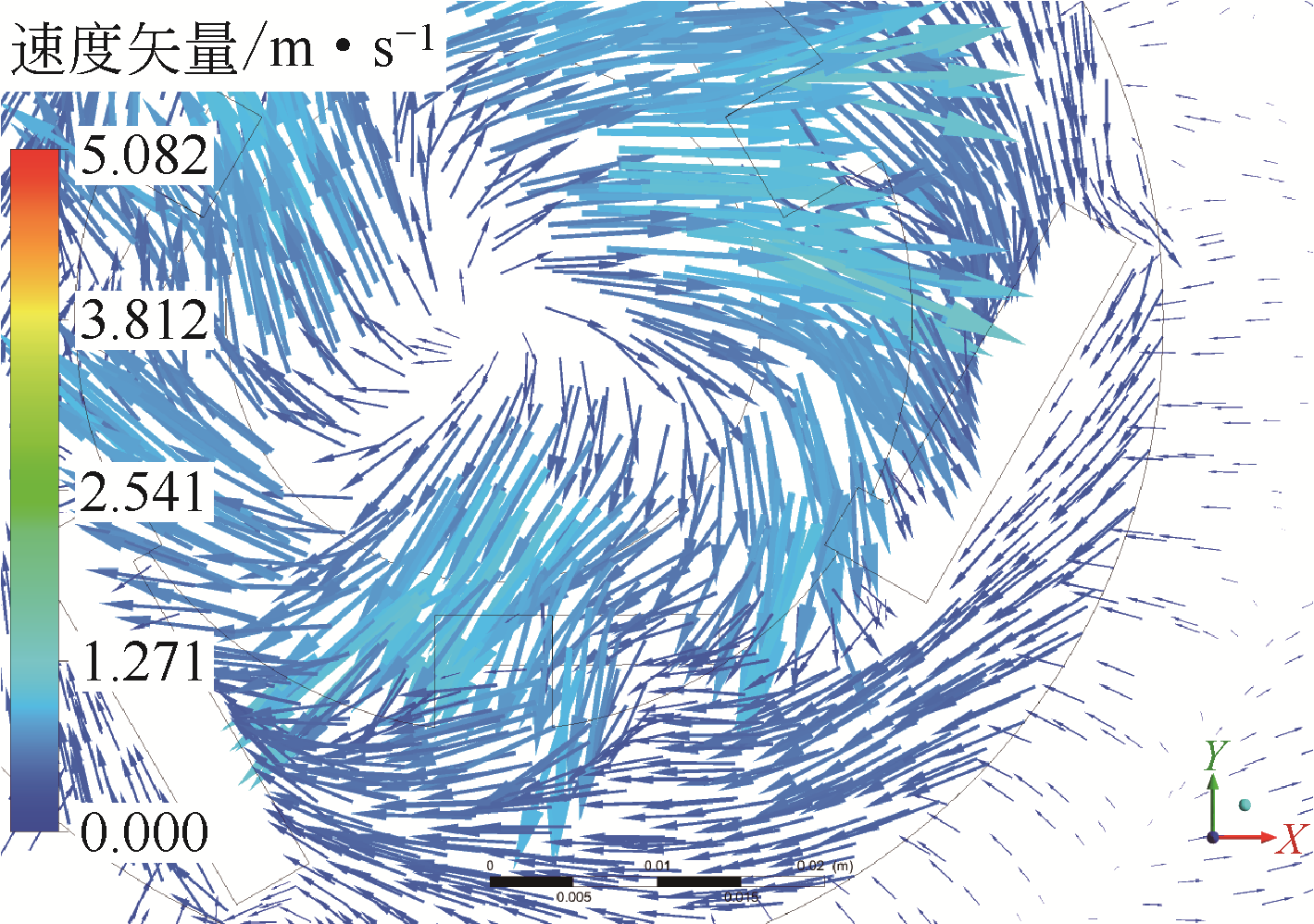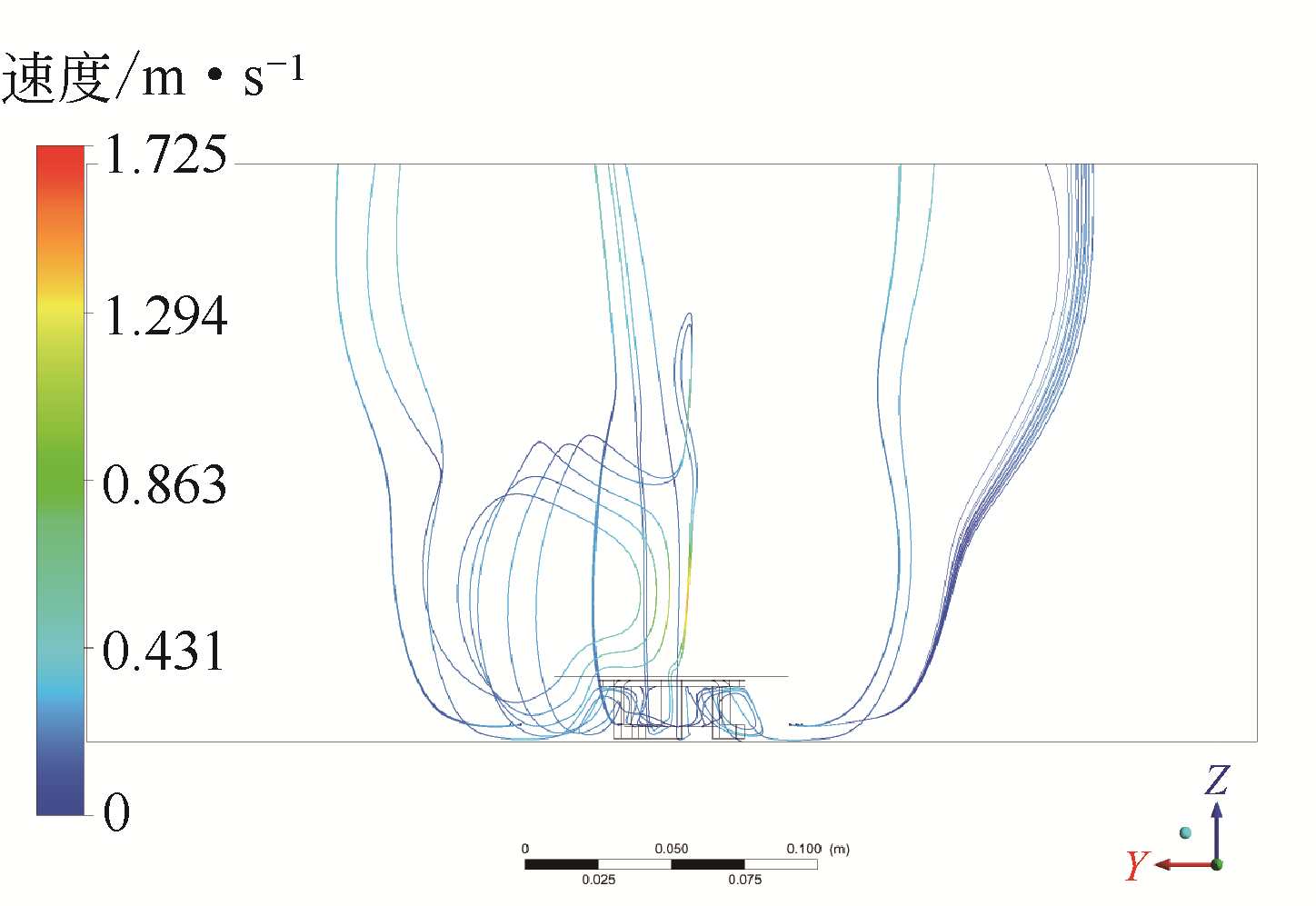Chemical Industry and Engineering Progress ›› 2020, Vol. 39 ›› Issue (1): 95-102.DOI: 10.16085/j.issn.1000-6613.2019-0569
• Chemical processes and equipment • Previous Articles Next Articles
Application of composite aerator in aeration tank based on rotary float valve and CFD simulation
Binjie WANG( ),Shaochuan SHEN,Kejian YAO(
),Shaochuan SHEN,Kejian YAO( )
)
- State Key Laboratory Breeding Base of Green Chemistry-Synthesis Technology, College of Chemical Engineering, Zhejiang University of Technology, Hangzhou 310032, Zhejiang, China
-
Received:2019-04-11Online:2020-01-14Published:2020-01-05 -
Contact:Kejian YAO
基于旋转浮阀的复合曝气器在曝气池中的应用及CFD模拟
- 浙江工业大学化学工程学院,绿色化学合成技术国家重点实验室培育基地,浙江 杭州 310032
-
通讯作者:姚克俭 -
作者简介:王斌杰(1991—),男,硕士研究生,研究方向为传质与分离。E-mail:wbjie716@163.com 。
CLC Number:
Cite this article
Binjie WANG,Shaochuan SHEN,Kejian YAO. Application of composite aerator in aeration tank based on rotary float valve and CFD simulation[J]. Chemical Industry and Engineering Progress, 2020, 39(1): 95-102.
王斌杰,沈绍传,姚克俭. 基于旋转浮阀的复合曝气器在曝气池中的应用及CFD模拟[J]. 化工进展, 2020, 39(1): 95-102.
share this article
Add to citation manager EndNote|Ris|BibTeX
URL: https://hgjz.cip.com.cn/EN/10.16085/j.issn.1000-6613.2019-0569
| 1 | 夏维, 刘德华. 曝气器技术研究现状及发展趋势[J]. 环境研究与监测, 2015, 28(2): 38-40. |
| XIA W, LIU D H. Research status and development trend of aerator technology[J]. Environmental Study and Monitoring, 2015, 28(2): 38-40. | |
| 2 | 张利平, 夏军, 胡志芳. 中国水资源状况与水资源安全问题分析[J]. 长江流域资源与环境, 2009, 18(2): 116-120. |
| ZHANG L P, XIA J, HU Z F. Situation and problem analysis of water resource security in China[J]. Resources and Environment in the Yangtze Basin, 2009, 18(2): 116-120. | |
| 3 | 钱正英, 张星斗. 中国可持续发展水资源战略研究综合报告[J]. 中国工程科学, 2000, 2(8): 1-17. |
| QIAN Z Y, ZHANG X D. Strategic research on sustainable development of water resource in China[J]. Engineering Sciences, 2000, 2(8): 1-17. | |
| 4 | 原建光, 孙娟, 宛丽, 等. 污水处理厂节能降耗的运行措施[J]. 中国给水排水, 2013, 29(18): 149-150. |
| YUAN J G, SUN J, WAN L, et al. Operation measures for saving energy and reducing consumption in sewage treatment plant[J]. China Water and Wastewater, 2013, 29(18): 149-150. | |
| 5 | ZHOU X H, WU Y Y, SHI H C, et al. Evaluation of oxygen transfer parameters of fine-bubble aeration system in plug flow aeration tank of wastewater treatment plant[J]. Journal of Environmental Sciences, 2013(2): 295-301. |
| 6 | 庄健, 王洪臣, 齐鲁, 等. 孔径对微孔曝气充氧性能的影响[J]. 环境工程学报, 2014, 8(5): 1723-1726. |
| ZHUANG J, WANG H C, QI L, et al. Effects of pore diameter on oxygenation performance in fine pore aeration[J]. Chinese Journal of Environmental Engineering, 2014, 8(5): 1723-1726. | |
| 7 | 张斌, 郝玉萍, 周京徽. 橡胶膜微孔曝气器的清水充氧性能试验研究[J]. 环境科学与技术, 2010, 33(12F): 304-305. |
| ZHANG B, HAO Y P, ZHOU J H. Experimental study on oxygenation performance of rubber membrane microporous aerator[J]. Environmental Science & Technology, 2010, 33(12F): 304-305. | |
| 8 | 陈雷. 微孔弹性膜片软管曝气器的结构与特点[J]. 新世纪水泥导报, 2012, 18(5): 33-35. |
| CHEN L. Structure and characteristics of microporous elastic diaphragm hose aerator[J]. Cement Guide for New Epoch, 2012, 18(5): 33-35. | |
| 9 | 鹏博. 世界染料工业发展现状[J]. 上海染料, 2002, 30(1): 5-10. |
| PENG B. Current situation of dyestuffs industry in the world[J]. Shanghai Dyestuffs, 2002, 30(1): 5-10. | |
| 10 | 李家珍. 染料、染色工业废水处理[M]. 北京: 化学工业出版社, 1997: 3. |
| LI J Z. Treatment of wastewater from dyestuff and dyeing industry[M]. Beijing: Chemical Industry Press, 1997: 3 | |
| 11 | 王祖恒, 朱菊香, 沈绍传, 等. 旋转曝气器的曝气充氧性能研究[J]. 现代化工, 2017, 37(6): 161-165. |
| WANG Z H, ZHU J X, SHEN S C, et al. Study on aeration and oxygenation performances of rotary bubble diffuser[J]. Modern Chemical Industry, 2017, 37(6): 161-165. | |
| 12 | 张绪满, 姚克俭, 何健烽, 等. 旋转浮阀塔板的流体力学性能研究[J]. 石油化工, 2012, 41(8): 916-920. |
| ZHANG X M, YAO K J, HE J F, et al. Hydrodynamic performance of rotary valve trays[J]. Petrochemical Technology, 2012, 41(8): 916-920. | |
| 13 | 袁云峰, 齐亮, 姚克俭. 旋转浮阀塔板的气含率分布研究[J]. 石油化工, 2013, 42(9): 990-995. |
| YUAN Y F, QI L, YAO K J. Distribution of gas hold-up fraction on rotary valve tray[J]. Petrochemical Technology, 2013, 42(9): 990-995. | |
| 14 | 詹宇木, 齐亮, 刘静, 等. 主动旋转阀的流体力学性能研究[J]. 高校化学工程学报, 2016, 30(2): 332-340. |
| ZHAN Y M, QI L, LIU J, et al. Hydrodynamic properties of a forced-rotary valve[J]. Journal of Chemical Engineering of Chinese Universities, 2016, 30(2): 332-340. | |
| 15 | 中华人民共和国住房和城乡建设部. 微孔曝气器清水氧传质性能测定: CJ/T 475—2015[S]. 北京: 中国标准出版社, 2015. |
| Ministry of Housing and Urban-Rural Construction of the People's Republic of China. Measurement of oxygen mass transfer in clean water for fine bubble diffuser: CJ/T 475—2015 [S]. Beijing: Standards Press of China, 2015. | |
| 16 | 张绪满. 旋转浮阀塔板的流体力学性能研究及流场CFD模拟[D]. 杭州: 浙江工业大学, 2012. |
| ZHANG X M. Hydrodynamic performance of rotary valve trays[D]. Hangzhou: Zhejiang University of Technology, 2012. | |
| 17 | 郑瑞朋, 齐亮, 田端正, 等. 三溢流分隔壁塔板上气含率的研究[J]. 石油化工, 2013, 42(6): 646-650. |
| ZHENG R P, QI L, TIAN D Z, et al. Study on gas hold-up fraction on three-pass dividing wall tray[J]. Petrochemical Technology, 2013, 42(6): 646-650. | |
| 18 | 陶红歌, 陈焕新, 谢军龙, 等. 基于面积加权平均速度和质量加权平均速度的流体流动均匀性指标探讨[J]. 化工学报, 2010, 61(s2): 116-120. |
| TAO H G, CHEN H X, XIE J L, et al. Flow uniformity index based on area weighted and mass weighted average velocity[J]. CIESC Journal, 2010, 61(s2): 116-120. | |
| 19 | 熊长川, 李卫星, 邢卫红. 柱式膜组件曝气过程的气液两相流模拟[J]. 高校化学工程学报, 2017, 31(5): 1052-1061. |
| XIONG C C, LI W X, XING W H. Simulation of gas-liquid two-phase flow in aeration processes of a column type membrane module[J]. Journal of Chemical Engineering of Chinese Universities, 2017, 31(5): 1052-1061. | |
| 20 | 王乐, 苏军伟, 郑西朋, 等. 塔式曝气池内非牛顿活性污泥气液两相数值模拟[J]. 中国环境科学, 2017, 37(5): 1783-1791. |
| WANG L, SU J W, ZHEN X P, et al. Numerical simulation of gas/liquid two-phase flow in the aeration tank with non-Newtonian activated sludge[J]. China Environmental Science, 2017, 37(5): 1783-1791. | |
| 21 | 杜堂正, 李德昌, 聂丽华. 一种新型曝气设备及其气液传质研究[J]. 化工进展, 2005, 24(5): 526-531. |
| TANG T Z, LI D C, NIE L H. New kind of agitated aeration equipment and research on its oxygen transfer[J]. Chemical Industry and Engineering Progress, 2005, 24(5): 526-531. | |
| 22 | 崔觉剑. 折边固定阀塔板流场的实验研究和数值模拟[D]. 杭州: 浙江工业大学, 2007. |
| CUI J J. Experimental and numerical study of flow field on folded-downward edge fixed valve tray[D]. Hangzhou: Zhejiang University of Technology, 2007. |
| [1] | WANG Tai, SU Shuo, LI Shengrui, MA Xiaolong, LIU Chuntao. Dynamic behavior of single bubble attached to the solid wall in the AC electric field [J]. Chemical Industry and Engineering Progress, 2023, 42(S1): 133-141. |
| [2] | CHEN Kuangyin, LI Ruilan, TONG Yang, SHEN Jianhua. Structure design of gas diffusion layer in proton exchange membrane fuel cell [J]. Chemical Industry and Engineering Progress, 2023, 42(S1): 246-259. |
| [3] | YANG Yudi, LI Wentao, QIAN Yongkang, HUI Junhong. Analysis of influencing factors of natural gas turbulent diffusion flame length in industrial combustion chamber [J]. Chemical Industry and Engineering Progress, 2023, 42(S1): 267-275. |
| [4] | WANG Ying, HAN Yunping, LI Lin, LI Yanbo, LI Huili, YAN Changren, LI Caixia. Research status and future prospects of the emission characteristics of virus aerosols in urban wastewater treatment plants [J]. Chemical Industry and Engineering Progress, 2023, 42(S1): 439-446. |
| [5] | GUO Qiang, ZHAO Wenkai, XIAO Yonghou. Numerical simulation of enhancing fluid perturbation to improve separation of dimethyl sulfide/nitrogen via pressure swing adsorption [J]. Chemical Industry and Engineering Progress, 2023, 42(S1): 64-72. |
| [6] | SHAO Boshi, TAN Hongbo. Simulation on the enhancement of cryogenic removal of volatile organic compounds by sawtooth plate [J]. Chemical Industry and Engineering Progress, 2023, 42(S1): 84-93. |
| [7] | CHEN Lin, XU Peiyuan, ZHANG Xiaohui, CHEN Jie, XU Zhenjun, CHEN Jiaxiang, MI Xiaoguang, FENG Yongchang, MEI Deqing. Investigation on the LNG mixed refrigerant flow and heat transfer characteristics in coil-wounded heat exchanger (CWHE) system [J]. Chemical Industry and Engineering Progress, 2023, 42(9): 4496-4503. |
| [8] | LIU Xuanlin, WANG Yikai, DAI Suzhou, YIN Yonggao. Analysis and optimization of decomposition reactor based on ammonium carbamate in heat pump [J]. Chemical Industry and Engineering Progress, 2023, 42(9): 4522-4530. |
| [9] | LUO Cheng, FAN Xiaoyong, ZHU Yonghong, TIAN Feng, CUI Louwei, DU Chongpeng, WANG Feili, LI Dong, ZHENG Hua’an. CFD simulation of liquid distribution in different distributors in medium-low temperature coal tar hydrogenation reactor [J]. Chemical Industry and Engineering Progress, 2023, 42(9): 4538-4549. |
| [10] | ZHAO Xi, MA Haoran, LI Ping, HUANG Ailing. Simulation analysis and optimization design of mixing performance of staggered impact micromixer [J]. Chemical Industry and Engineering Progress, 2023, 42(9): 4559-4572. |
| [11] | YE Zhendong, LIU Han, LYU Jing, ZHANG Yaning, LIU Hongzhi. Optimization of thermochemical energy storage reactor based on calcium and magnesium binary salt hydrates [J]. Chemical Industry and Engineering Progress, 2023, 42(8): 4307-4314. |
| [12] | XI Yonglan, WANG Chengcheng, YE Xiaomei, LIU Yang, JIA Zhaoyan, CAO Chunhui, HAN Ting, ZHANG Yingpeng, TIAN Yu. Research progress on the application of micro/nano bubbles in anaerobic digestion [J]. Chemical Industry and Engineering Progress, 2023, 42(8): 4414-4423. |
| [13] | YU Junnan, YU Jianfeng, CHENG Yang, QI Yibo, HUA Chunjian, JIANG Yi. Performance prediction of variable-width microfluidic concentration gradient chips by deep learning [J]. Chemical Industry and Engineering Progress, 2023, 42(7): 3383-3393. |
| [14] | SHAN Xueying, ZHANG Meng, ZHANG Jiafu, LI Lingyu, SONG Yan, LI Jinchun. Numerical simulation of combustion of flame retardant epoxy resin [J]. Chemical Industry and Engineering Progress, 2023, 42(7): 3413-3419. |
| [15] | WANG Shuo, ZHANG Yaxin, ZHU Botao. Prediction of erosion life of coal water slurry pipeline based on grey prediction model [J]. Chemical Industry and Engineering Progress, 2023, 42(7): 3431-3442. |
| Viewed | ||||||
|
Full text |
|
|||||
|
Abstract |
|
|||||
